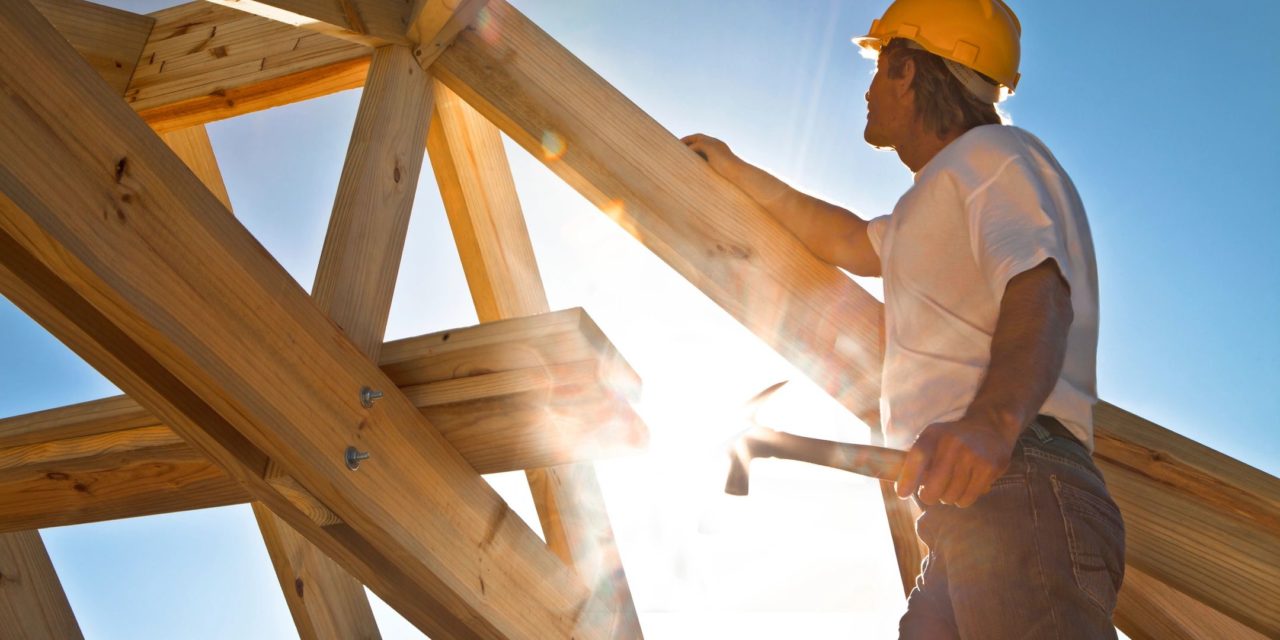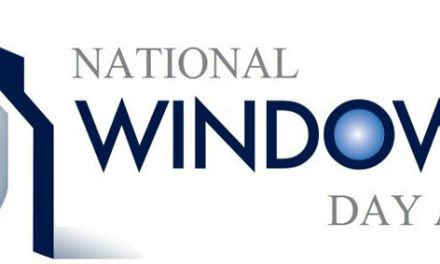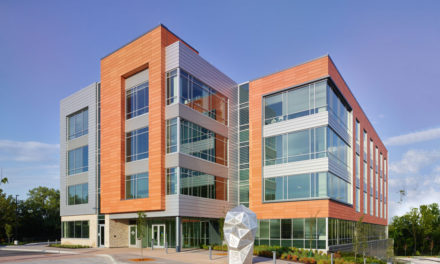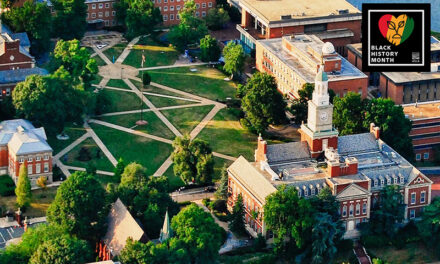State is first in the nation to alter building codes in support of a new generation of engineered wooden building materials with exciting properties of strength, durability and beauty. With mass timber, architects and builders acquire a new material to create with and rural areas gain the prospect of new high-skilled, high-paid jobs.
SEATTLE, Dec. 5, 2018 /PRNewswire/ — The Washington State Building Code Council (SBCC) has approved code changes that will allow for the structural use of mass timber in buildings as tall as 18 stories. This makes Washington the first state in the nation to allow tall mass timber buildings into its building code, without pursuing an alternate method.
Mass timber is a category of large-scale, prefabricated engineered wood products, the best-known of which is Cross Laminated Timber (CLT). CLT panels are comprised of multiple layers of lumber, each stacked perpendicularly and bonded with a structural adhesive. The result is a beautiful, lightweight, but durable building material, with favorable fire, seismic and thermal performance. CLT and other mass timber building systems have been used in European architecture for over twenty years and may also be utilized for rapid modular construction.
Washington’s code changes will update the IBC 2015 to incorporate all of the International Code Council’s Tall Wood Building Code proposals voted on in Richmond, VA in October, 2018. It will permit three new types of mass timber building construction — Type IV A, B, C — allowing for the structural use of mass timber at 18, 12, and 9 stories. The action comes after more than two years of comprehensive research and testing, including full-scale fire tests, completed by the International Code Council Ad Hoc Committee on Tall Wood Buildings. Currently, the building code limits mass timber’s structural use to a maximum of 6 stories.
A diverse group of a dozen-plus organizations has worked to advance the code changes in Washington State, including regional sustainability organization Forterra, a non-profit that’s led a statewide coalition to catalyze a market for Cross Laminated Timber, and the American Institute of Architects Washington Council, the architects’ voice on state policy issues and the official applicant of the code changes.
“These code changes will allow for greater use of mass timber here in Washington, and position our state as a leader in the nation,” said Michelle Connor, President and CEO of Forterra. “As mass timber becomes more widely utilized, it has great potential to support employment in rural areas, improve forest health on public lands in need of restoration, and enable new and affordable approaches to building for fast-growing urban populations.”
“The changes approved by the SBCC will provide an increased opportunity to use Washington-based wood products in building projects across the state,” said Jeffrey Hamlett, Executive Director of AIA Washington Council. “We applaud the SBCC for passing these amendments and look forward to enjoying the creative challenges and benefiting from the aesthetic and carbon-related advantages of designing taller buildings made with wood.”
SBCC approval follows passage of state legislation (ESB 5450) earlier this year that required the Council to adopt new rules for the use of mass timber products for residential and commercial building construction. Senator Marko Liias, sponsor of the legislation, pushed for these changes to assist in the development of mass timber manufacturing, construction and design industries within the state.
“We face challenges throughout Washington on multiple fronts, including addressing forest health, protecting our environment, and increasing employment in rural communities,” said Sen. Marko Liias (D-Lynnwood). “Using a people-first approach, Washington can become a leader on mass timber to solve these problems. That’s why we are taking steps to make this a reality through our work in the State Legislature and now with the approval of mass timber code changes at the State Building Code Council.”
Several mass-timber projects below 6 stories have been completed in Washington in recent years, including a set of pilot CLT classrooms funded by the State of Washington. Now, with approval of these code changes, taller wood projects like Brock Commons at the University of British Columbia can move forward. An 18-story wood-hybrid building, Brock Commons was completed in less than 70 days after the prefabricated components arrived on site — four months faster than an average project of this size.
Joe Mayo, of the architectural firm Mahlum Architects, said, “There has been considerable and growing excitement around mass timber for years, especially due to its aesthetic and technical performance traits. However, like any new building system, it has taken time for the building code to catch-up and recognize the potential of mass timber. This code change does just that for Washington State and finally allows mass timber buildings to realize their potential, grow up and revolutionize the way we design and build.”
Susan Jones, of the architectural firm atelierjones said, “I am so proud of my state of Washington. As a third-generation Washingtonian, who grew up amongst its forests, I am deeply optimistic about the impact these code changes will have on our forests’ health and long-term sustainability. As an architect, sitting on the ICC Tall Wood Building Ad Hoc Committee for the last two years, I am thrilled to have helped write these codes for our nation, and for our beautiful State of Washington, to allow our owners, developers, and design teams to have choices to embrace this highly innovative, renewable lower-carbon construction.”
Jason Callahan, of the Washington Forest Protection Association, said, “We are excited about any action that leads to incentives for wood and wood products. Support for wood products helps Washington move closer to its climate goals, while also providing other ecosystem benefits.”
Washington’s code changes are scheduled to go into effect at the conclusion of the next Washington State Legislative Session, which is scheduled for April 28, 2019. The Pacific Northwest is leading the way on mass timber, with Oregon also recently approving tall mass timber buildings through a Statewide Alternate Method to be incorporated through their normal code cycle in late 2019.
ABOUT FORTERRA
Dedicated to regional sustainability in all its dimensions — environmental, social, and economic — Forterra secures places across Washington’s landscape that are keystones of a positive future. In addition to championing policies that marry sustainability and economic development, we also organize large-scale restoration and stewardship efforts, often involving volunteers. And, over our nearly 30-year history we have also have completed more than 450 separate land transactions that have protected upward of 275,000 acres worth greater than $500 million — from remote wildlands, to working farms and forests, to urban property for parks, the arts, community purposes, and affordable housing.





